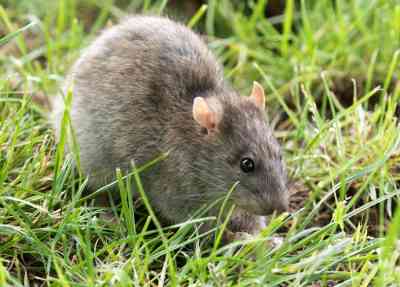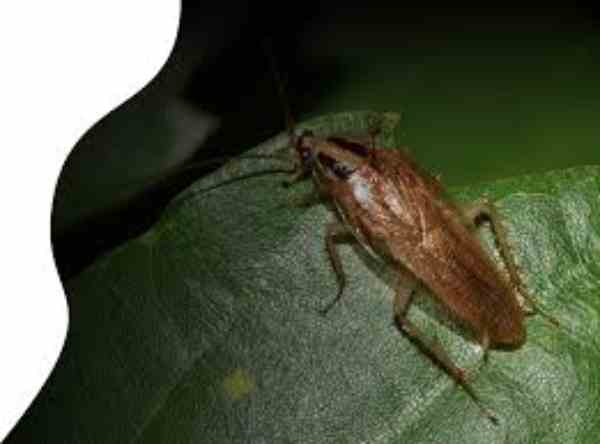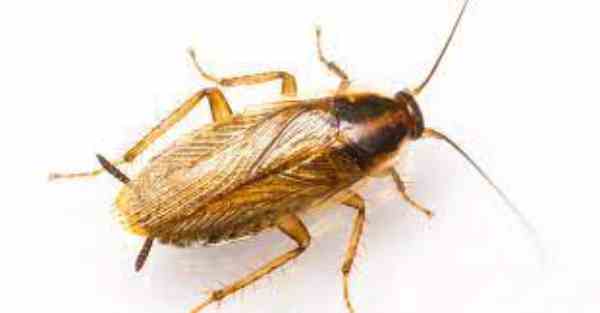Beneath our bustling cities and beneath the labyrinth of pipes and tunnels, lies a world that few of us ever get to witness – the mysterious and largely unexplored ecosystem of the urban sewer systems. While the mere thought of sewer systems may conjure images of filth and unpleasantness, a surprising array of creatures have carved out a remarkable existence in this subterranean realm.
What Animals Live in Sewers? From elusive albino alligators lurking in the depths of New York City’s sewers to resilient rats and scavenging cockroaches, the subways of our sewage networks are teeming with life. But it’s not just the creatures we expect; there are astonishing stories of survival and adaptation that defy imagination.
In this article, we will delve deep into the shadowy world beneath our feet, shedding light on the intriguing and unexpected inhabitants of ewer systems across the globe. Get ready to be amazed by the resilience and resourcefulness of the animals that have made the sewers their home.
Fascination with Urban Wildlife and Hidden Ecosystems
The fascination with urban wildlife and hidden ecosystems has grown immensely in recent years as we continue to uncover the unexpected residents of the concrete jungles we call cities. Among the most enigmatic and intriguing of these ecosystems are the sewer systems that snake beneath our streets. These dark, damp, and oft-forgotten tunnels are home to a surprising array of creatures.
From the charismatic albino alligators that have become urban legends in New York City to the more common but equally resilient rats and cockroaches, these subterranean environments challenge our perceptions of where life can thrive. Exploring the depths of these hidden ecosystems not only reveals the adaptability of nature but also reminds us of the interconnectedness of all living things in the most unlikely of places.
The Unseen Residents of Sewers
Beneath the bustling streets and sidewalks of our cities, a hidden world thrives in the unlikeliest of places – the sewers. These underground conduits for waste and stormwater are home to a cast of unseen residents who have adapted to life in the darkness. From the massive alligators rumored to lurk in the sewers of major cities like New York, to the ubiquitous rats that scurry through the tunnels, these creatures are the unsung heroes of urban ecology.
Rats:

Rats are ubiquitous residents of urban environments, and their presence in sewers is no exception. These highly adaptable rodents have found a niche in the subterranean world, making use of the labyrinthine tunnels to seek shelter and forage for food. Sewer-dwelling rats often exhibit unique behaviors, such as navigating through dark and damp conditions and forming complex social structures within the tight confines of the sewer system.
While they are frequently associated with pest control concerns, it’s essential to recognize that rats are remarkable survivors, showcasing their ability to thrive in challenging, human-altered environments. Understanding their adaptations and behaviors in sewers is not only a fascinating aspect of urban ecology but also critical for effective pest management strategies.
Cockroaches:

Cockroaches, too, have adapted to life in the sewers, displaying their incredible resilience in the face of adverse conditions. These insects have evolved to thrive in the damp and dimly lit underground tunnels, where they find both shelter and sustenance. Sewer-dwelling cockroaches possess unique physiological adaptations that enable them to endure in such an environment.
They play a crucial ecological role in breaking down organic matter, assisting in the decomposition process, and helping maintain the balance of the sewer ecosystem. While often viewed as pests in domestic settings, sewer roaches serve as a testament to nature’s ability to adapt and thrive in unexpected places. Exploring their adaptations and behaviors in this context sheds light on the fascinating world of urban entomology and the ecological functions these insects perform beneath our cities.
Sewer Flies:

Sewer flies, also known as drain flies or moth flies, may be diminutive in size, but their presence in sewer systems is significant. These tiny insects have adapted to the moist and nutrient-rich conditions found underground, playing a pivotal role in breaking down organic matter and maintaining the sewer ecosystem’s health.
Sewer flies are unassuming but vital contributors to the delicate balance of this unique environment. Understanding their life cycles, behaviors, and ecological functions offers insight into the often-overlooked components of urban ecosystems and the essential role these flies play in nutrient recycling within the sewers.
Surprising Sewer-Dwellers

When we think of sewers, we typically conjure images of filth and unpleasantness, but beneath the surface lies a world that defies our preconceptions. The sewer systems of our cities are home to some of the most surprising and unexpected residents in the animal kingdom. From giant albino alligators to resilient rats and resourceful cockroaches, the diversity of life in these underground tunnels is astonishing.
In this article, we will introduce you to the surprising sewer-dwellers who have carved out a niche in this challenging environment. Prepare to be amazed by the adaptability and tenacity of these creatures as we explore their unique adaptations and lifestyles in the subterranean world of urban sewers.
Amphibians:

While it may seem improbable, some amphibians have managed to find a home in the subterranean world of sewer systems. Frogs, toads, and salamanders, among others, have adapted to these unique environments, particularly in areas where stable water sources provide them with a habitat.
Sewer-dwelling amphibians have developed intriguing adaptations, such as altered breeding strategies and behaviors, enabling them to persist in a world far removed from their natural habitats. Exploring these adaptations not only expands our understanding of amphibian biology but also highlights the remarkable resilience of these creatures in the face of urbanization and environmental challenges.
Reptiles:
Reptiles, including the iconic alligators, are among the most surprising and captivating inhabitants of sewer systems. Stories of alligators lurking in the sewers of major cities like New York have captured the public’s imagination for decades. These reptiles, often introduced as exotic pets and later released, have adapted to the underground environment in unique ways.
Their presence poses challenges to sewer management and public safety while raising questions about the ethical treatment of exotic pets. Examining the biology and behavior of reptiles in sewers sheds light on the complexities of urban wildlife management and the need for responsible pet ownership.
Aquatic Intruders:
Sewer systems aren’t limited to terrestrial animals; they can also harbor a variety of aquatic intruders that find their way into the underground waterways through stormwater runoff or other means. Non-native fish and aquatic species can disrupt sewer ecosystems, highlighting the potential impacts of urbanization on natural water systems.
Managing and mitigating the effects of these aquatic intruders is a critical aspect of maintaining the health and functionality of sewer systems while preserving local aquatic habitats. Understanding the challenges posed by these invaders provides valuable insights into the intricate interactions between urban environments and adjacent ecosystems.
Microscopic Sewer Life
While the charismatic megafauna of sewers like alligators and rats may steal the spotlight, there’s a thriving ecosystem at the microscopic level that often goes unnoticed. Sewers are not just home to larger animals; they also host a diverse community of microorganisms and invertebrates that play vital roles in breaking down organic matter and maintaining the sewer’s ecosystem.
From bacteria that consume waste to tiny aquatic invertebrates that navigate the underground waterways, these microscopic sewer life forms are crucial for the proper functioning of the sewer system. In this section, we will explore the often-overlooked world of these tiny but essential creatures that quietly contribute to the balance of life in the sewers.
Invertebrates:
Sewer systems are home to a diverse community of invertebrates, ranging from tiny aquatic worms to crustaceans. These often-overlooked organisms are vital for the decomposition of organic matter within the sewers, playing a central role in nutrient recycling and maintaining ecosystem balance.
While they may lack the charismatic appeal of larger sewer residents, these invertebrates contribute significantly to the health of underground ecosystems. Exploring their adaptations, life histories, and ecological roles sheds light on the intricate web of life within the sewers and underscores the importance of studying even the smallest members of urban ecosystems.
Bacterial Communities:
The microbial world within sewer systems is a hidden but critical component of the underground ecosystem. Bacterial communities play a pivotal role in breaking down organic matter, transforming waste into less harmful substances, and maintaining the health and function of sewer systems. Understanding the diversity and functions of these microorganisms is essential for effective sewer management and environmental health.
Bacterial communities within sewers not only provide valuable insights into microbial ecology but also highlight the intricate connections between urban infrastructure and the natural processes that sustain it. Exploring these microscopic residents underscores the significance of microbial life in unexpected places and the importance of considering microbial processes in urban planning and maintenance.
The Challenges of Urban Wildlife in Sewers
Surviving in the sewers is no easy feat. Urban wildlife that calls these underground environments home face a myriad of challenges. From the constant threat of flooding to limited food resources and exposure to toxins, life in the sewers is a constant battle for survival.
In this section, we will delve into the specific challenges that sewer-dwelling animals encounter and examine the remarkable adaptations they have developed to thrive in this harsh and unforgiving environment. Understanding these challenges not only provides insight into the lives of these creatures but also raises important questions about how our urban development impacts wildlife in unexpected ways.
Studying Sewer Wildlife
As our awareness of the urban wilderness beneath our feet grows, so does the need for scientific study and conservation efforts. Researchers and biologists have begun to explore the secrets of sewer wildlife, shedding light on their behaviors, habits, and adaptations.
By studying these animals, we gain valuable insights into urban ecology, species resilience, and the potential impacts of human activity on these hidden ecosystems. In this section, we’ll take a closer look at the efforts to study sewer wildlife, highlighting some of the groundbreaking research that has expanded our understanding of these unique inhabitants of the urban underworld.
Conclusion
The world of animals living in sewers is a captivating and often misunderstood one. From the bizarre legends of albino alligators to the unassuming but tenacious rats, the subterranean ecosystems of our cities hold an array of surprises. As we continue to uncover the secrets of these hidden worlds, we gain a deeper appreciation for the adaptability and resilience of the natural world.
Moreover, studying sewer wildlife provides valuable insights into the challenges of urbanization and prompts us to consider how we can coexist with and protect these unexpected urban residents. So, the next time you hear a tale of sewer-dwelling creatures, remember that beneath the surface, a world of wonder and mystery awaits discovery.
Reference:
- https://alcesspool.com/animals-sewer-pipes/
- https://www.alleghenycounty.us/uploadedFiles/Allegheny_Home/Health_Department/Programs/Housing_and_Community_Environment/Rodent-ACHD-How-Rats-Enter-Homes-from-Sewers.pdf
- https://www.birnieplumbinganddrains.ca/blog/black-sludge-in-a-sink-drain/#:~:text=Over%20time%2C%20the%20plumbing%20pipes,black%20sludge%20in%20the%20drain.

Jeevan Kodiyan
An animal enthusiast with an interest in zoology, studying the behavior and activities of animals in the wild habitat. I work on research projects related to species conservation and endangered species protection. I also leverage zoology to become an educator, educating others about the importance of protecting our natural environment and the beauty of animals in their natural habitats.









